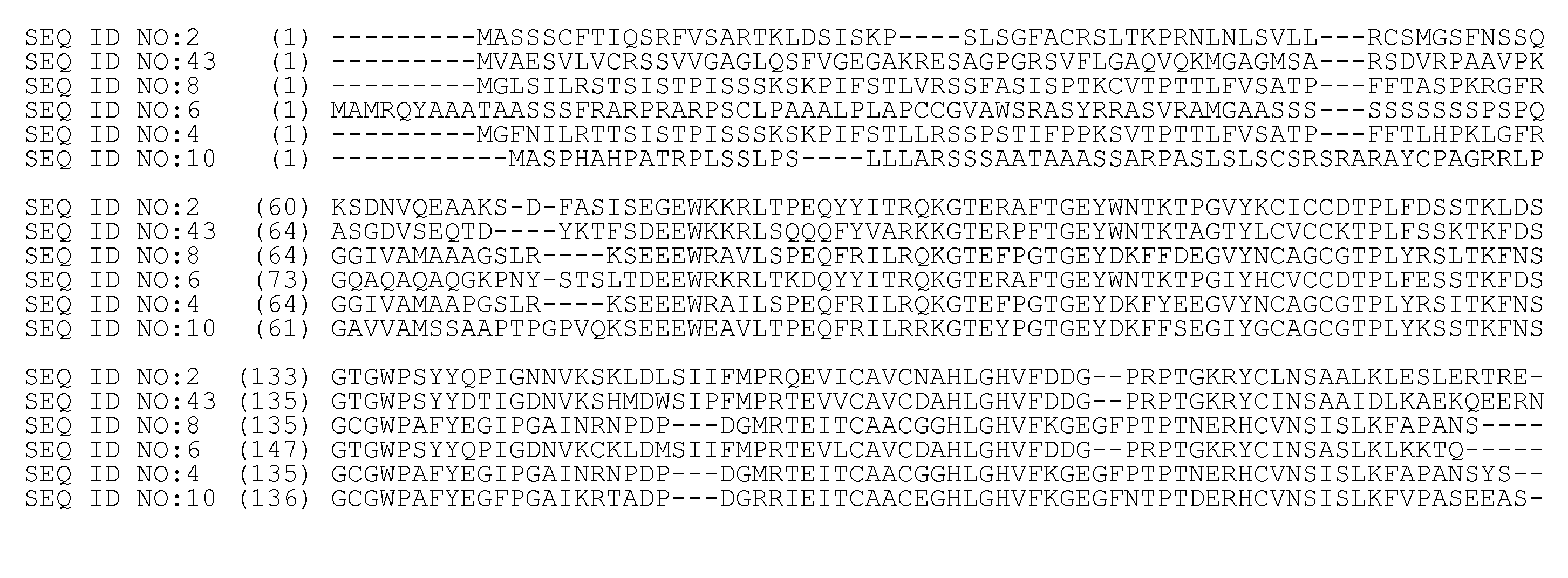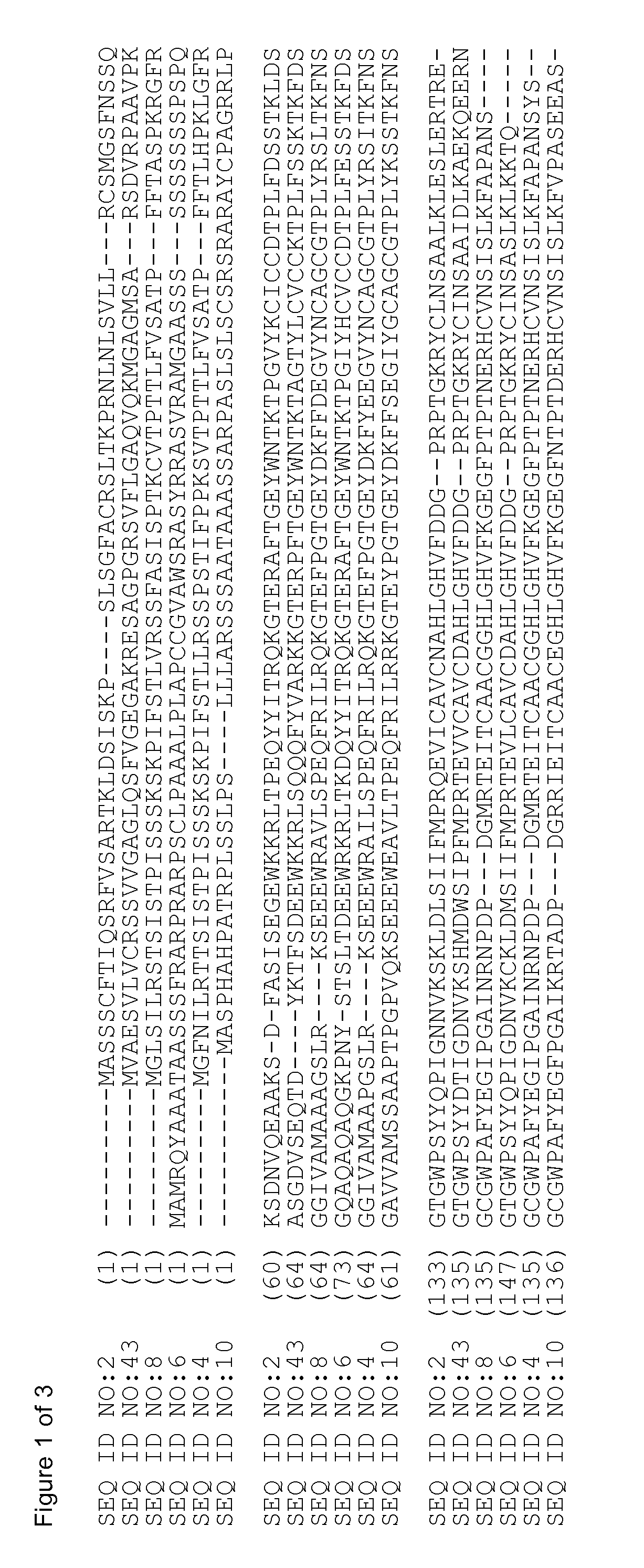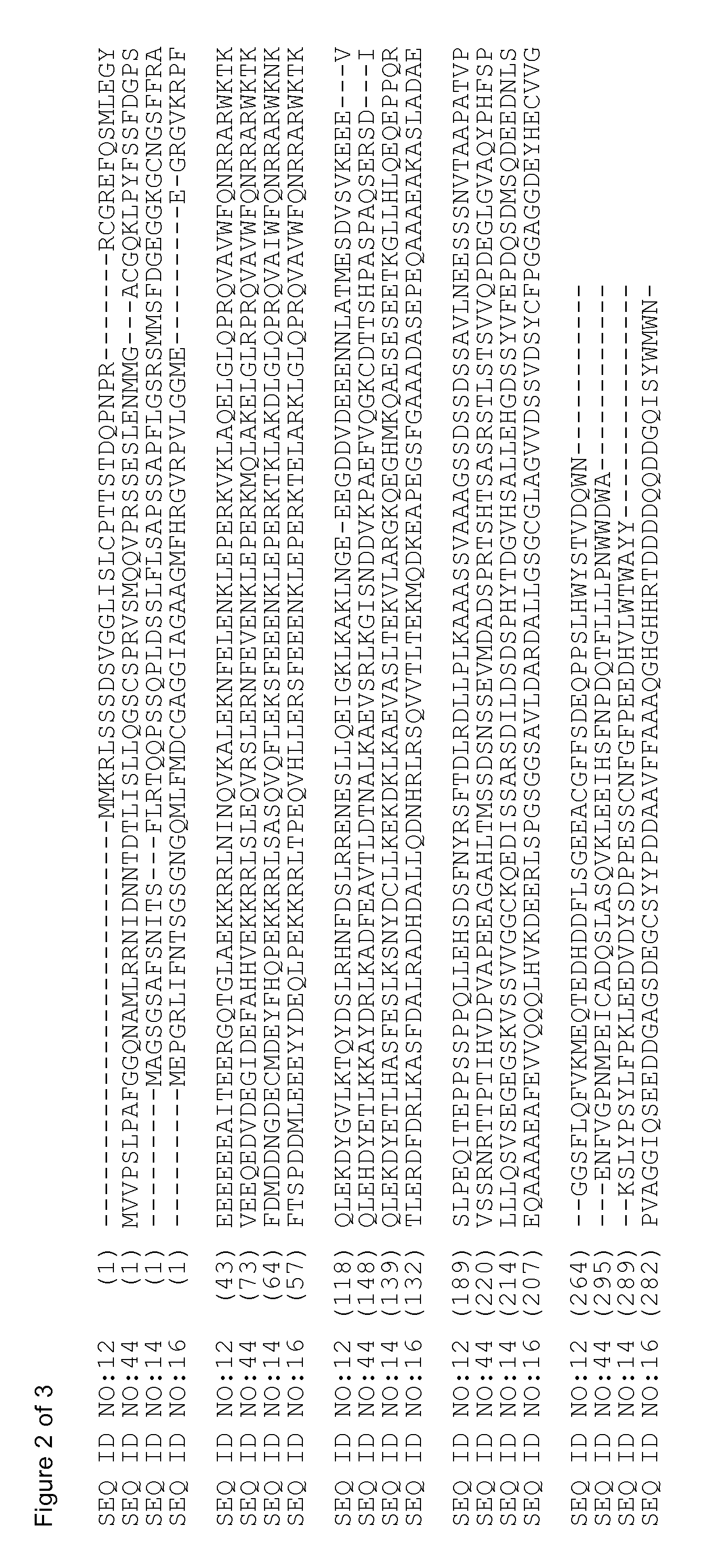Transgenic Plants with Increased Stress Tolerance and Yield
a technology of stress tolerance and plant, applied in the field of transgenic plants, can solve the problems of limiting the growth and crop yield of plants, cell death and consequently yield loss of plants, and plant cells lose water, so as to increase the yield of agricultural products of plants and enhance plant growth
- Summary
- Abstract
- Description
- Claims
- Application Information
AI Technical Summary
Benefits of technology
Problems solved by technology
Method used
Image
Examples
example 1
Cloning of Full-Length cDNAs
[0070]The full-length DNA sequence of the Physcomitrella patens EST65 methionine sulfoxide reductase family protein (SEQ ID NO:43) was blasted against proprietary databases of canola, soybean, rice, maize, linseed, sunflower, barley, and wheat cDNAS at an e value of e−10 (Altschul et al., 1997, Nucleic Acids Res. 25: 3389-3402). All the contig hits were analyzed for the putative full length sequences, and the longest clones representing the putative full length contigs were fully sequenced. One homolog from canola, two homologs from rice, one homolog from soybean, and one homolog from wheat were identified. The degrees of amino acid identity and similarity of these sequences to the respective closest known public sequences are indicated in Tables 2 through 6 (Align 2.0).
TABLE 2Comparison of BN51364980 (SEQ ID NO: 2) to known methioninesulfoxide reductasesPublic DatabaseSequenceAccession #SpeciesIdentity (%)NP_564640Arabidopsis thaliana82.00%AAM65202A. tha...
example 2
Water Stress-Tolerant Arabidopsis Plants
[0073]The polynucleotides of Table 1 are ligated into a binary vector containing a selectable marker. The resulting recombinant vector contains the corresponding gene in the sense orientation under a constitutive promoter. The recombinant vectors are transformed into an Agrobacterium tumefaciens strain according to standard conditions. A. thaliana ecotype Col-0 or C24 are grown and transformed according to standard conditions. T1 and T2 plants are screened for resistance to the selection agent conferred by the selectable marker gene. T3 seeds are used in greenhouse or growth chamber experiments.
[0074]Approximately 3-5 days prior to planting, seeds are refrigerated for stratification. Seeds are then planted, fertilizer is applied and humidity is maintained using transparent domes. For the “biomass” assay, plants are grown in a greenhouse at 22° C. with photoperiod of 16 hours light / 8 hours dark and watered twice a week. For the “cycling drought...
example 3
Nitrogen Stress Tolerant Arabidopsis Plants
[0076]The polynucleotides of Table 1 are ligated into a binary vector containing a selectable marker. The resulting recombinant vector contains the corresponding gene in the sense orientation under a constitutive promoter. The recombinant vectors are transformed into an A. tumefaciens strain according to standard conditions. A. thaliana ecotype Col-0 or C24 are grown and transformed according to standard conditions. T1 and T2 plants are screened for resistance to the selection agent conferred by the selectable marker gene.
[0077]Plants are grown in flats using a substrate that contains no organic components. Each flat is wet with water before seedlings resistant to the selection agent are transplanted onto substrate. Plants are grown in a growth chamber set to 22° C. with a 55% relative humidity with photoperiod set at 16 h light / 8 h dark. A controlled low or high nitrogen nutrient solution is added to waterings on Days 12, 15, 22 and 29. Wa...
PUM
 Login to View More
Login to View More Abstract
Description
Claims
Application Information
 Login to View More
Login to View More - Generate Ideas
- Intellectual Property
- Life Sciences
- Materials
- Tech Scout
- Unparalleled Data Quality
- Higher Quality Content
- 60% Fewer Hallucinations
Browse by: Latest US Patents, China's latest patents, Technical Efficacy Thesaurus, Application Domain, Technology Topic, Popular Technical Reports.
© 2025 PatSnap. All rights reserved.Legal|Privacy policy|Modern Slavery Act Transparency Statement|Sitemap|About US| Contact US: help@patsnap.com



